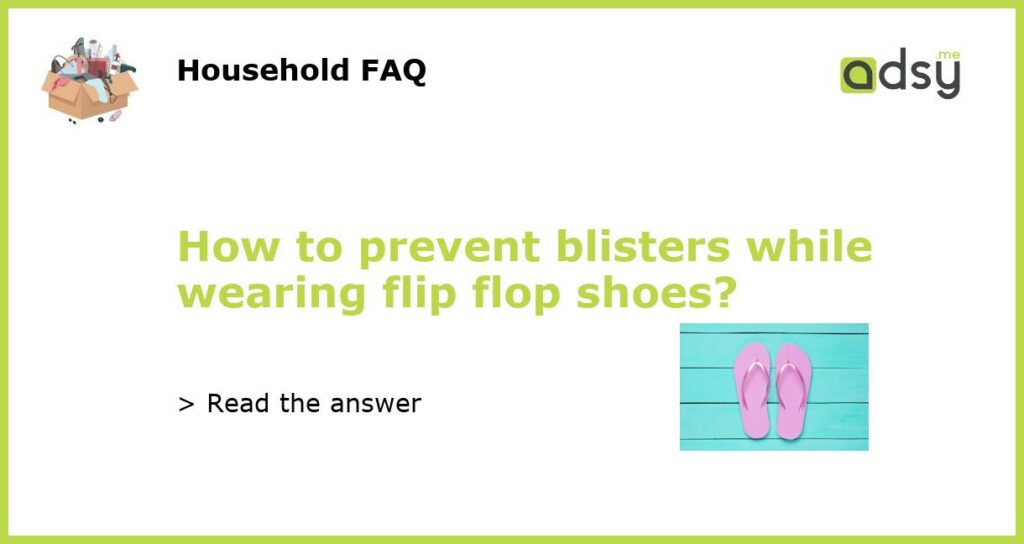Wearing flip flops, but still want to avoid blisters? Here’s how
Nothing screams summer more than a pair of flip flops. They’re comfortable, they’re easy to wear, and they’re perfect for the beach or pool. However, they can also wreak havoc on your feet, leaving you with painful blisters. So, what can you do to prevent blisters while wearing flip flops? Here are a few tips to keep in mind.
Choose the right type of flip flops
Not all flip flops are created equal. While you may be drawn to a certain style or color, it’s important to prioritize comfort and support if you want to avoid blisters. Look for flip flops with a thick sole, as this will provide more cushioning and protection for your feet. Additionally, opt for styles with a contoured footbed, which can help prevent your feet from sliding around or rubbing against the straps.
Break them in gradually
New flip flops can be stiff and uncomfortable at first, so it’s best to break them in gradually. Wear them for short periods of time around the house or on short errands before committing to a full day out in them. This will allow your feet to adjust to the new shoes and help prevent blisters from forming.
Consider using moleskin or blister pads
If you know you’re prone to blisters, consider using moleskin or blister pads on areas of your feet that are most likely to rub against the flip flops. These products can create a protective barrier between your skin and the shoe, reducing friction and preventing blisters from forming. Be sure to apply them before you put on your flip flops.
Take breaks and give your feet a rest
Even if you’ve chosen the most comfortable flip flops and have taken steps to prevent blisters, it’s still a good idea to give your feet a break every now and then. If you’re spending a whole day out and about in flip flops, take breaks to sit down and give your feet a chance to rest. This can help prevent blisters from forming and can also reduce overall foot fatigue and discomfort.






